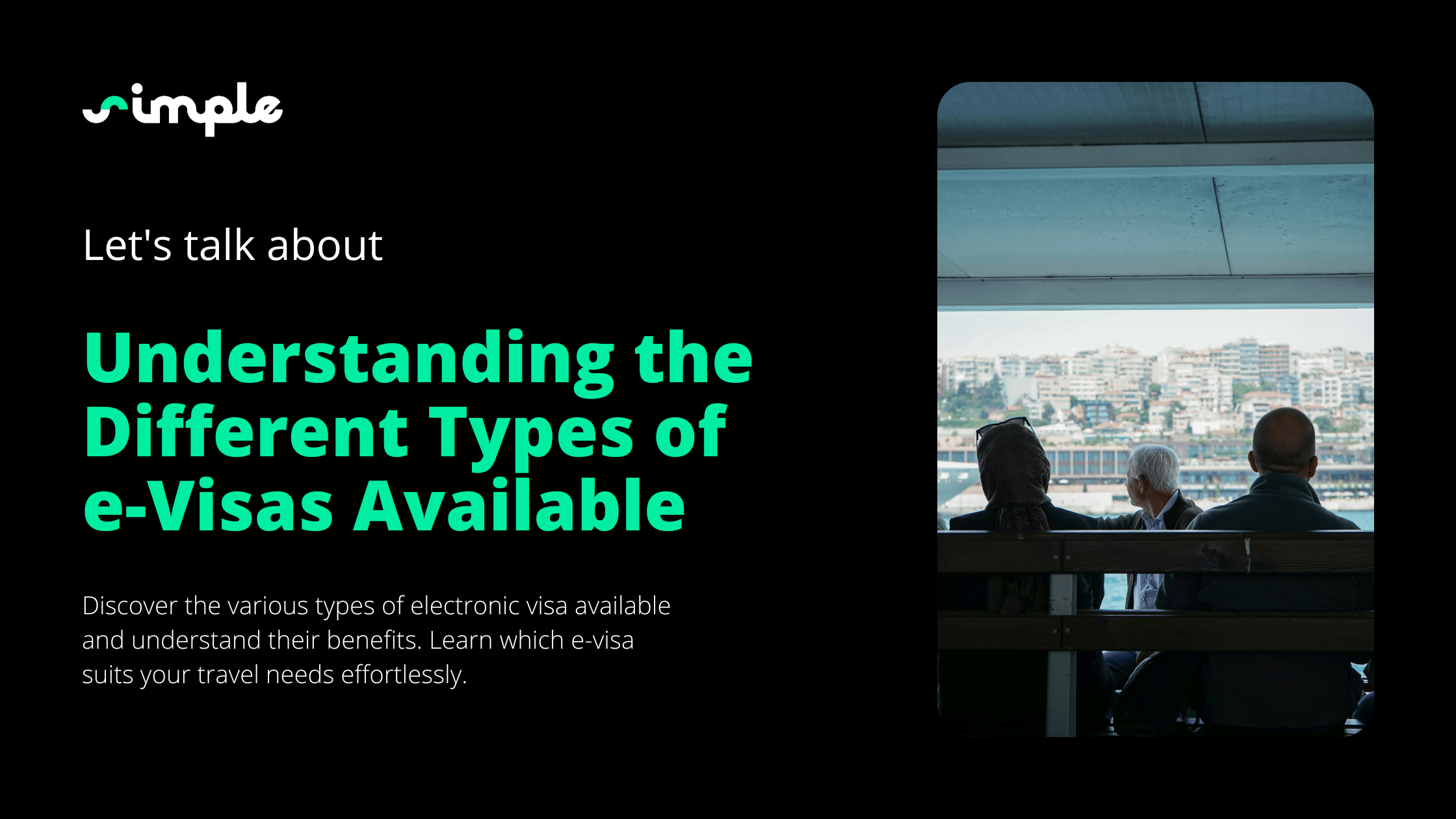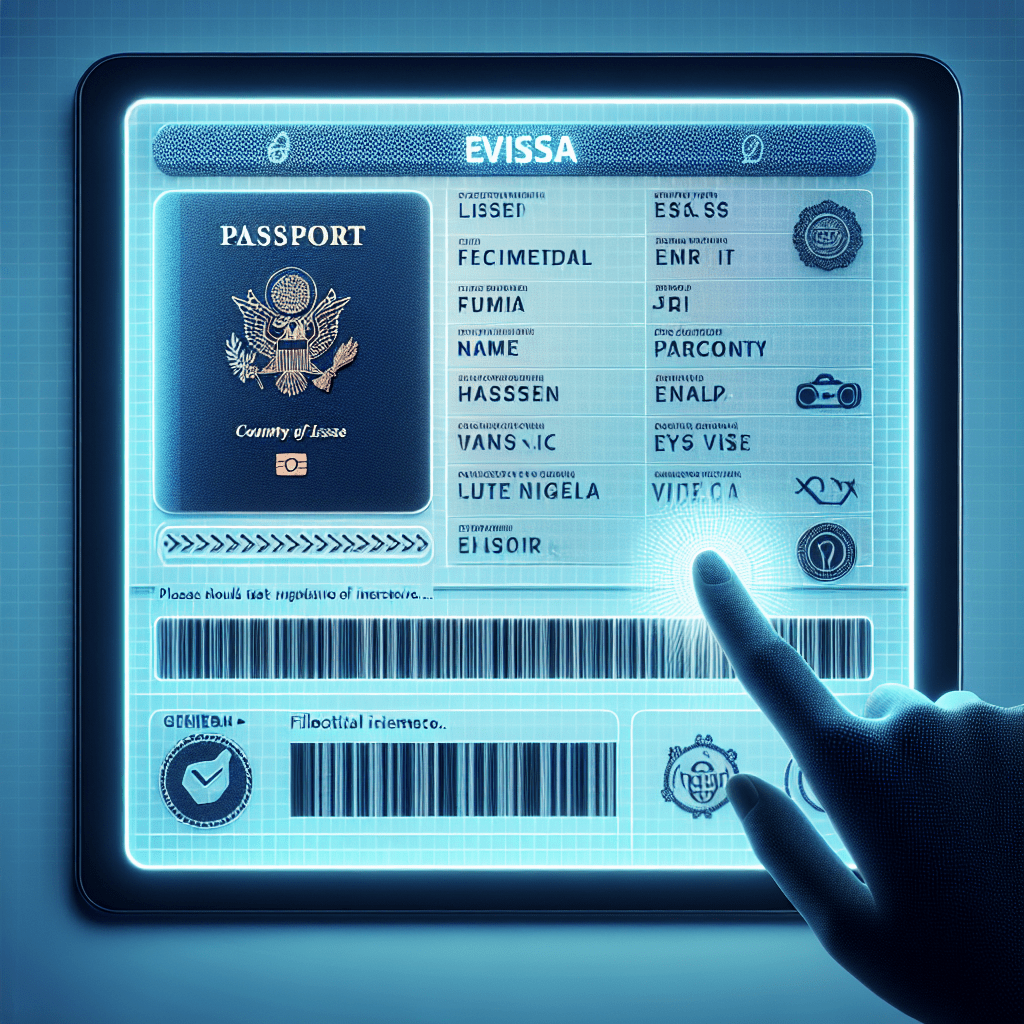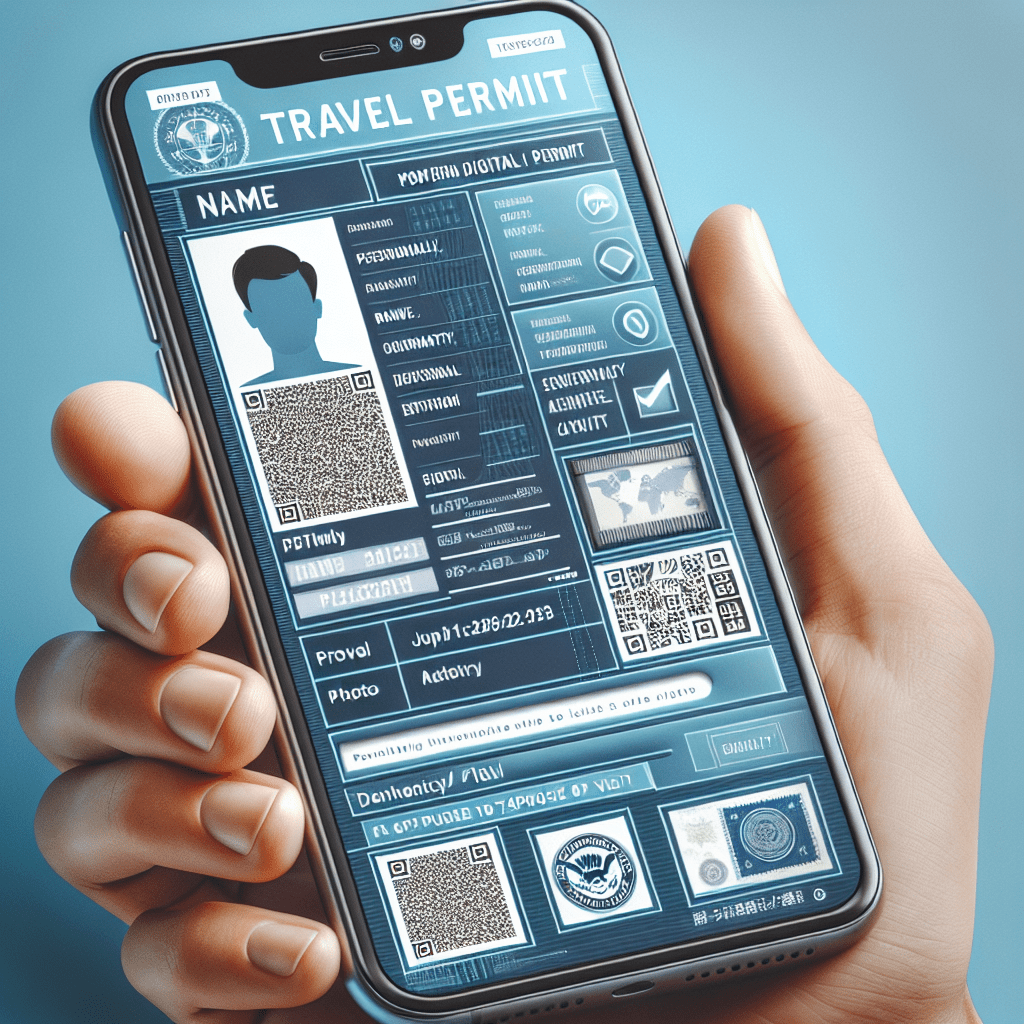**Understanding the Different Types of Electronic Visa Available**

The digital age has revolutionized many aspects of our lives, and global travel is no exception. One of the most significant advancements in this realm is the advent of e-Visas. These electronic travel authorizations have made the process of obtaining a visa more convenient and efficient, eliminating the need for physical visits to embassies or consulates. As more countries adopt this technology, the variety of e-Visas available to travelers continues to expand, catering to different needs and purposes. Travelers can now apply for an electronic visa from the comfort of their homes, using online visa application platforms that streamline the entire process. This shift not only saves time but also reduces the stress associated with traditional visa applications. With the growing importance of e-Visas in global travel, it is essential to understand the different types available and how they can benefit various travelers. This article aims to provide a comprehensive overview of the different types of e-Visas, helping you navigate the options and choose the one that best suits your travel needs. Whether you are planning a short vacation, a business trip, or a long-term stay, understanding the nuances of each e-Visa type will ensure a smoother and more enjoyable travel experience. For more detailed information on electronic visas, you can visit our [electronic visa](https://simplevisa.com) page.

Tourist e-Visas
Description of Tourist e-Visas
Tourist e-Visas are designed to facilitate leisure travel, allowing visitors to explore new destinations without the hassle of traditional visa procedures. These digital travel permits are typically issued for short-term stays, ranging from a few days to several months, depending on the country. The primary purpose of a tourist e-Visa is to enable travelers to engage in tourism-related activities such as sightseeing, visiting friends and family, and experiencing local culture. Many popular travel destinations now offer tourist e-Visas, making it easier for international visitors to plan their trips. Countries like India, Australia, Turkey, and Kenya have embraced this technology, providing a seamless and efficient way for tourists to obtain the necessary travel authorization. By offering an electronic travel document, these countries aim to boost tourism and make the entry process more convenient for visitors.
Requirements and Application Process
Applying for a tourist e-Visa typically involves a straightforward online visa application process. Applicants are required to provide essential documents, including a valid passport, recent passport-sized photographs, and sometimes proof of travel arrangements such as flight tickets and hotel reservations. The specific requirements may vary depending on the destination, so it is crucial to check the guidelines provided by the respective country’s e-visa platform. The application process usually begins with filling out an online immigration form, where applicants need to enter personal details, travel information, and answer security-related questions. Once the form is completed, the next step involves uploading the necessary documents and paying the visa fee through a secure online payment system. After submission, the application undergoes e-visa processing, which can take anywhere from a few hours to several days, depending on the country’s regulations. Upon approval, the electronic travel authorization is sent to the applicant via email. Travelers are advised to print a copy of the e-Visa and carry it along with their passport when traveling. Some countries also offer the option to store the e-Visa on a mobile device, making it even more convenient for travelers.
Advantages of Using a Tourist e-Visa
One of the most significant advantages of using a tourist e-Visa is the time-saving benefit. Traditional visa applications often require multiple visits to embassies or consulates, long waiting times, and extensive paperwork. In contrast, the digital visa application process can be completed from the comfort of one’s home, significantly reducing the time and effort involved. Another key advantage is the simplified entry process at destinations. With an electronic travel document, travelers can bypass long queues at immigration checkpoints, as their information is already available in the system. This streamlined process not only enhances the travel experience but also reduces the stress associated with international travel. Furthermore, the availability of an internet-based visa system ensures that travelers have access to up-to-date information and support throughout the application process. Many e-visa platforms offer customer service assistance, helping applicants resolve any issues or answer questions they may have. This level of support adds an extra layer of convenience and reliability to the e-Visa experience. In summary, tourist e-Visas offer a modern, efficient, and user-friendly solution for leisure travelers. By understanding the requirements and benefits of these digital travel permits, tourists can enjoy a smoother and more enjoyable journey to their chosen destinations.

Business e-Visas
Description of Business e-Visas
Business e-Visas are specifically designed to cater to the needs of business travelers who require a quick and efficient way to obtain travel authorization for work-related purposes. These digital travel permits allow professionals to engage in various business activities such as attending meetings, participating in conferences, negotiating contracts, and exploring business opportunities in foreign countries. The primary goal of a business e-Visa is to facilitate seamless international business travel, enabling professionals to focus on their work without the hassle of traditional visa procedures. Countries around the world recognize the importance of fostering international business relations and have thus implemented business e-Visas to attract global professionals. Nations like the United States, Canada, Singapore, and the United Arab Emirates offer business e-Visas, making it easier for business travelers to enter and conduct their activities efficiently. By providing an electronic travel authorization, these countries aim to promote economic growth and international collaboration.
Requirements and Application Process
The application process for a business e-Visa is designed to be straightforward and efficient, catering to the busy schedules of professionals. Applicants are typically required to provide specific documents that demonstrate the purpose of their visit and their professional credentials. Commonly required documents include a valid passport, an invitation letter from the host company or organization, proof of business credentials, and sometimes a detailed itinerary of planned activities. The process begins with filling out an online visa application form, where applicants need to enter personal details, business information, and travel plans. Once the form is completed, the next step involves uploading the necessary documents and paying the visa fee through a secure online payment system. The application then undergoes e-visa processing, which can vary in duration depending on the country’s regulations and the applicant’s nationality. Upon approval, the electronic travel document is sent to the applicant via email. Business travelers are advised to print a copy of the e-Visa and carry it along with their passport when traveling. Some countries also offer the option to store the e-Visa on a mobile device, providing added convenience for professionals on the go.
Benefits of a Business e-Visa
One of the most significant benefits of a business e-Visa is the streamlined process it offers for busy professionals. Traditional visa applications often involve multiple visits to embassies or consulates, extensive paperwork, and long waiting times. In contrast, the digital visa application process can be completed from the comfort of one’s office or home, significantly reducing the time and effort involved. Another key advantage is the ability to engage in business activities without lengthy visa procedures. With an electronic travel authorization, business travelers can quickly obtain the necessary permits to attend meetings, conferences, and other professional events. This efficiency is particularly valuable for last-minute travel plans or urgent business needs. Furthermore, the availability of an internet visa service ensures that business travelers have access to up-to-date information and support throughout the application process. Many e-visa platforms offer customer service assistance, helping applicants resolve any issues or answer questions they may have. This level of support adds an extra layer of convenience and reliability to the e-Visa experience. In summary, business e-Visas provide a modern, efficient, and user-friendly solution for professionals traveling for work-related purposes. By understanding the requirements and benefits of these digital travel permits, business travelers can enjoy a smoother and more productive journey to their chosen destinations.

Other Types of e-Visas
Student e-Visas
Student e-Visas are specifically designed to facilitate the entry of international students into foreign countries for educational purposes. These digital travel permits allow students to pursue their studies without the cumbersome process of traditional visa applications. The primary goal of a student e-Visa is to provide a seamless and efficient way for students to obtain the necessary travel authorization, enabling them to focus on their academic pursuits. To apply for a student e-Visa, applicants are typically required to provide proof of enrollment from a recognized educational institution. This may include an acceptance letter or an enrollment certificate. Additionally, students must demonstrate financial stability to cover their tuition fees and living expenses during their stay. Other necessary documents may include a valid passport, recent passport-sized photographs, and sometimes a detailed study plan or course outline. The application process for a student e-Visa usually begins with filling out an online visa application form. Applicants need to enter personal details, educational information, and travel plans. Once the form is completed, the next step involves uploading the necessary documents and paying the visa fee through a secure online payment system. The application then undergoes e-visa processing, which can vary in duration depending on the country’s regulations and the applicant’s nationality. Upon approval, the electronic travel document is sent to the applicant via email. Students are advised to print a copy of the e-Visa and carry it along with their passport when traveling. Some countries also offer the option to store the e-Visa on a mobile device, providing added convenience for students.
Medical e-Visas
Medical e-Visas are targeted towards travelers seeking medical treatment abroad. These digital travel permits allow patients to access healthcare services in foreign countries without the hassle of traditional visa procedures. The primary goal of a medical e-Visa is to provide a quick and efficient way for patients to obtain the necessary travel authorization, enabling them to focus on their health and recovery. To apply for a medical e-Visa, applicants are typically required to provide documentation that confirms their medical appointment and treatment plan. This may include a letter from the medical facility or healthcare provider, detailing the nature of the treatment and the expected duration of stay. Additionally, patients may need to provide their medical history and any relevant medical reports. Other necessary documents may include a valid passport, recent passport-sized photographs, and sometimes proof of financial stability to cover medical expenses. The application process for a medical e-Visa usually begins with filling out an online visa application form. Applicants need to enter personal details, medical information, and travel plans. Once the form is completed, the next step involves uploading the necessary documents and paying the visa fee through a secure online payment system. The application then undergoes e-visa processing, which can vary in duration depending on the country’s regulations and the applicant’s nationality. Upon approval, the electronic travel document is sent to the applicant via email. Patients are advised to print a copy of the e-Visa and carry it along with their passport when traveling. Some countries also offer the option to store the e-Visa on a mobile device, providing added convenience for patients.
Transit e-Visas
Transit e-Visas are designed for travelers passing through countries en route to their final destination. These digital travel permits allow travelers to make short stays in transit countries without the need for a traditional visa. The primary goal of a transit e-Visa is to provide a quick and efficient way for travelers to obtain the necessary travel authorization, enabling them to continue their journey without unnecessary delays. To apply for a transit e-Visa, applicants are typically required to provide proof of onward travel, such as flight tickets to their final destination. Additionally, travelers may need to provide a valid passport, recent passport-sized photographs, and sometimes proof of accommodation for the duration of their stay in the transit country. Other necessary documents may include a detailed travel itinerary and any relevant visas for the final destination. The application process for a transit e-Visa usually begins with filling out an online visa application form. Applicants need to enter personal details, travel information, and transit plans. Once the form is completed, the next step involves uploading the necessary documents and paying the visa fee through a secure online payment system. The application then undergoes e-visa processing, which can vary in duration depending on the country’s regulations and the applicant’s nationality. Upon approval, the electronic travel document is sent to the applicant via email. Travelers are advised to print a copy of the e-Visa and carry it along with their passport when traveling. Some countries also offer the option to store the e-Visa on a mobile device, providing added convenience for travelers. In summary, student, medical, and transit e-Visas offer specialized solutions for different types of travelers. By understanding the requirements and benefits of these digital travel permits, individuals can enjoy a smoother and more efficient journey to their chosen destinations.

Conclusion
The advent of e-Visas has revolutionized the way we approach international travel, offering a range of options tailored to different needs. Tourist e-Visas provide a convenient solution for leisure travelers, allowing them to explore new destinations without the hassle of traditional visa procedures. Business e-Visas cater to professionals who need to travel for work-related purposes, streamlining the process and enabling them to focus on their business activities. Additionally, other specialized e-Visas, such as student, medical, and transit e-Visas, address the unique requirements of specific traveler groups, ensuring a smooth and efficient journey. Each type of e-Visa comes with its own set of requirements and benefits, designed to facilitate the travel experience. Tourist e-Visas typically require basic documentation like a valid passport and proof of travel arrangements, while business e-Visas may necessitate additional documents such as invitation letters and business credentials. Student e-Visas focus on educational enrollment and financial stability, medical e-Visas require medical appointment confirmations and relevant health records, and transit e-Visas demand proof of onward travel and a detailed itinerary. Understanding these nuances is crucial for selecting the appropriate e-Visa type based on your travel needs. Choosing the right e-Visa type not only simplifies the application process but also enhances the overall travel experience. The efficiency of e-Visa systems, characterized by online visa applications, digital travel permits, and electronic travel authorizations, ensures that travelers can obtain the necessary documentation with minimal effort. The convenience of internet visa services and web-based visa platforms allows applicants to complete the process from the comfort of their homes, reducing the time and stress associated with traditional visa applications. In conclusion, the simplicity and efficiency of e-Visa systems make them an ideal choice for modern travelers. Whether you are planning a vacation, a business trip, or seeking medical treatment abroad, understanding the different types of e-Visas available will help you make an informed decision. Embrace the convenience of digital visa applications and enjoy a smoother, more enjoyable travel experience. For more information on electronic visas, visit our [electronic visa](https://simplevisa.com) page.